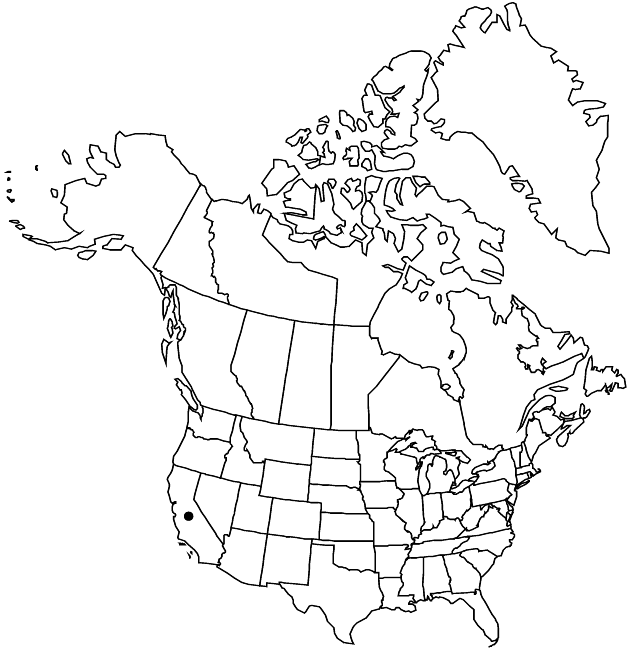Difference between revisions of "Pseudobahia heermannii"
in N. L. Britton et al., N. Amer. Fl. 34: 83. 1915.
Common names: Foothill sunburst brittlestem
IllustratedEndemic
Basionym: Monolopia heermannii Durand J. Acad. Nat. Sci. Philadelphia, n. s. 3: 93. 1855
Treatment appears in FNA Volume 21. Treatment on page 352.
FNA>Volume Importer |
imported>Volume Importer |
||
| (5 intermediate revisions by 2 users not shown) | |||
| Line 1: | Line 1: | ||
{{Treatment/ID | {{Treatment/ID | ||
|accepted_name=Pseudobahia heermannii | |accepted_name=Pseudobahia heermannii | ||
| − | |accepted_authority=(Durand) Rydberg | + | |accepted_authority=(Durand) Rydberg |
|publications={{Treatment/Publication | |publications={{Treatment/Publication | ||
|title=in N. L. Britton et al., N. Amer. Fl. | |title=in N. L. Britton et al., N. Amer. Fl. | ||
| Line 8: | Line 8: | ||
}} | }} | ||
|common_names=Foothill sunburst;brittlestem | |common_names=Foothill sunburst;brittlestem | ||
| − | |basionyms={{Treatment/ID/ | + | |special_status={{Treatment/ID/Special_status |
| + | |code=F | ||
| + | |label=Illustrated | ||
| + | }}{{Treatment/ID/Special_status | ||
| + | |code=E | ||
| + | |label=Endemic | ||
| + | }} | ||
| + | |basionyms={{Treatment/ID/Basionym | ||
|name=Monolopia heermannii | |name=Monolopia heermannii | ||
|authority=Durand | |authority=Durand | ||
| + | |rank=species | ||
| + | |publication_title=J. Acad. Nat. Sci. Philadelphia, n. s. | ||
| + | |publication_place=3: 93. 1855 | ||
}} | }} | ||
|synonyms= | |synonyms= | ||
| Line 35: | Line 45: | ||
-->{{#Taxon: | -->{{#Taxon: | ||
name=Pseudobahia heermannii | name=Pseudobahia heermannii | ||
| − | + | |authority=(Durand) Rydberg | |
| − | |authority=(Durand) Rydberg | ||
|rank=species | |rank=species | ||
|parent rank=genus | |parent rank=genus | ||
| Line 49: | Line 58: | ||
|publication title=in N. L. Britton et al., N. Amer. Fl. | |publication title=in N. L. Britton et al., N. Amer. Fl. | ||
|publication year=1915 | |publication year=1915 | ||
| − | |special status= | + | |special status=Illustrated;Endemic |
| − | |source xml=https:// | + | |source xml=https://bitbucket.org/aafc-mbb/fna-data-curation/src/2e0870ddd59836b60bcf96646a41e87ea5a5943a/coarse_grained_fna_xml/V19-20-21/V21_882.xml |
|tribe=Asteraceae tribe Heliantheae | |tribe=Asteraceae tribe Heliantheae | ||
|subtribe=Asteraceae (tribe Heliantheae) subtribe Baeriinae | |subtribe=Asteraceae (tribe Heliantheae) subtribe Baeriinae | ||
Latest revision as of 21:15, 5 November 2020
Plants to 30 cm. Leaves 10–30 mm, mostly 1-pinnately lobed (lobes 0.5–1.5 mm wide), distal sometimes entire. Peduncles 20–50 mm. Phyllaries ± 8, connate to 1/2 their lengths, elliptic to lanceolate (each pair with semicircular crest proximal to sinus, hard at maturity, ± enclosing cypselae). Ray florets ± 8. Disc florets 8–25+; tubes cylindric, abruptly dilated (throats broadly funnelform), lobes glabrous. Cypselae 2–2.5 mm. 2n = 6 + 0–2I, 8 + 0–1I or 0–1B, 10 + 0–1I.
Phenology: Flowering Mar–Jun.
Habitat: Grasslands or sandy or rocky openings in chaparral, foothill woodlands, yellow pine forests
Elevation: 100–1600 m
Discussion
Selected References
None.
Lower Taxa
None.

